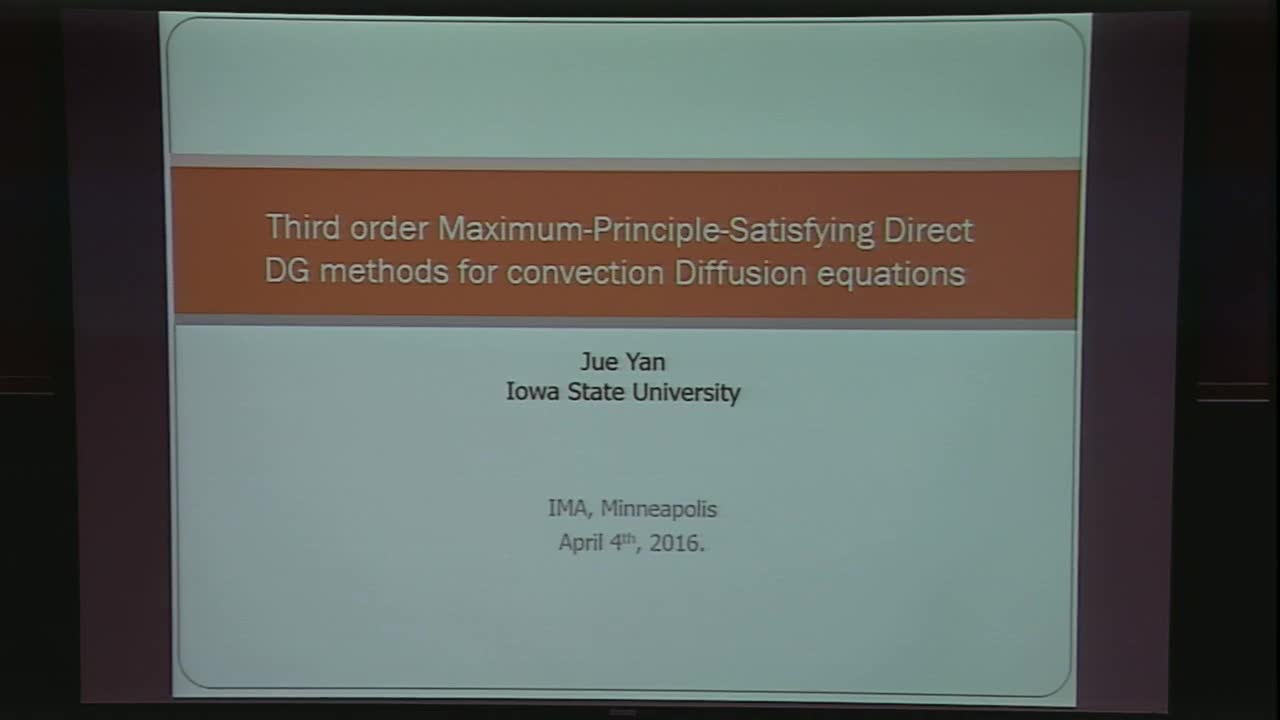Maximum Principle Satisfying High Order Direct Discontinuous Galerkin Method for Convection Diffusion Problems
Presenter
April 15, 2016
Keywords:
- Numerical approximation and evaluation
MSC:
- 33F05
Abstract
On the PDE continuous level, solutions of convection diffusion equations may satisfy the strict maximum principle. It claims that the evolution solution is bounded above and below within the given bounds. It is highly desirable that the numerical approximations to such PDEs are proven to satisfy the maximum principle. Density and pressure profiles to system like compressible Navier-Stokes equations are supposed to be positive with physical meaning. Negative value approximations may cause the computations to blow up.
In this talk, we will discuss our recent studies on the Direct Discontinuous Galerkin (DDG) methods for convection diffusion equations. We propose an algebraic methodology and a monotonicity argument (or convex combination argument) to bound the piecewise polynomial solutions in the given range. With quadratic polynomial approximations, we prove the DDG methods satisfy the strict maximum principle with 3rd order of accuracy. Sufficient conditions are given to guarantee the polynomial solutions bounded above and below by the given constants. Extension to two-dimensional rectangular meshes and triangular meshes will be discussed. For unstructured triangular meshes, we have no geometric restriction on the meshes and obtuse elements are allowed in the partition. Numerical examples will be presented to verify the optimal 3rd order of accuracy will be maintained with the maximum principle limiter applied. The positivity of the polynomial solutions is maintained sharply for nonlinear porous medium equations.
